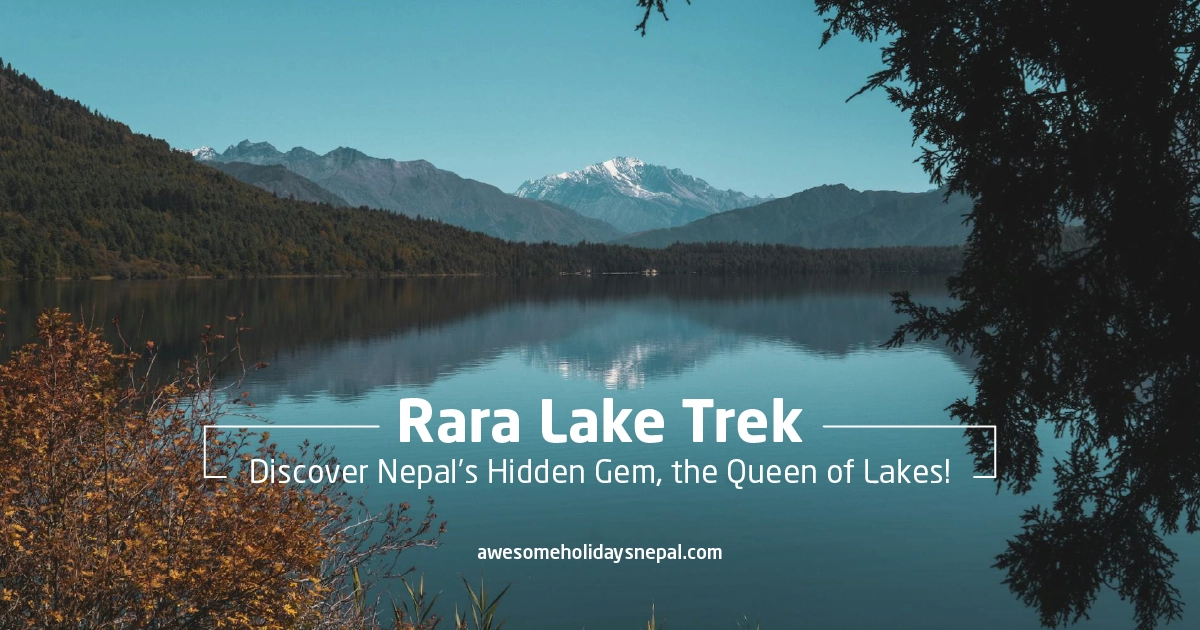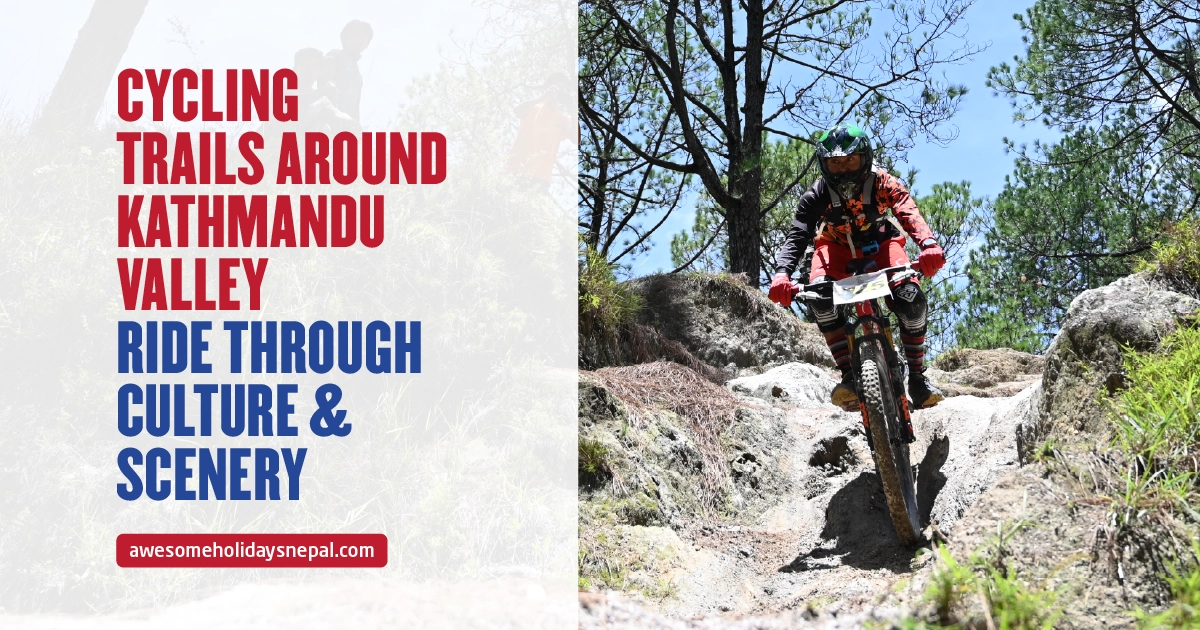Everest Base Camp Trek: Distance and Altitude
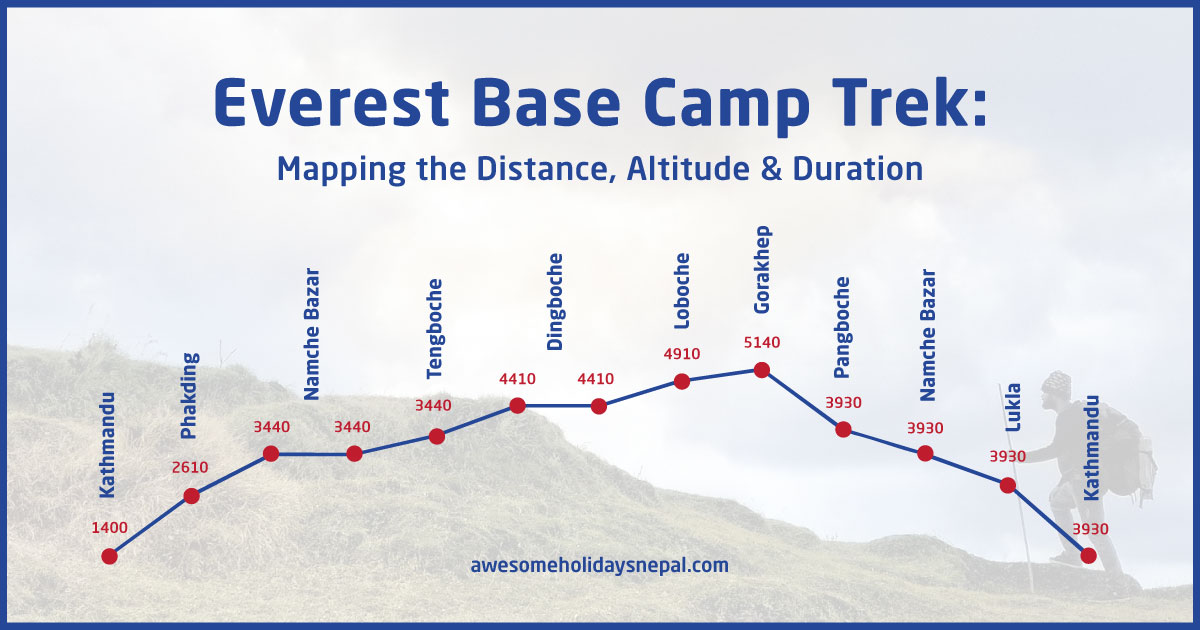
The Everest Base Camp (EBC) Trek is one of the world’s most sought-after adventures, with no doubt about it. Taking you to the foot of the highest mountain on Earth, Mount Everest (8,848.86m), is a journey through the stunning Himalayan landscapes, picturesque Sherpa villages, and high-altitude passes.
Before embarking on this once-in-a-lifetime experience, it is crucial to understand the Everest Base Camp trek distance, the total length, and the Everest Base Camp height. This guide provides an in-depth breakdown of these essential details, covering the EBC trekking route, elevation changes, and how to prepare for the trek.

Overview of Everest Base Camp Trek
The Everest Base Camp trek is a high-altitude adventure that starts in Lukla and follows a scenic route through the Sagarmatha National Park in the Khumbu region. It offers breathtaking views of the Himalayas, rich Sherpa culture, and encounters with famous landmarks like Namche Bazaar: The Heart of Everest Region, Tengboche Monastery, and Kalapathar.
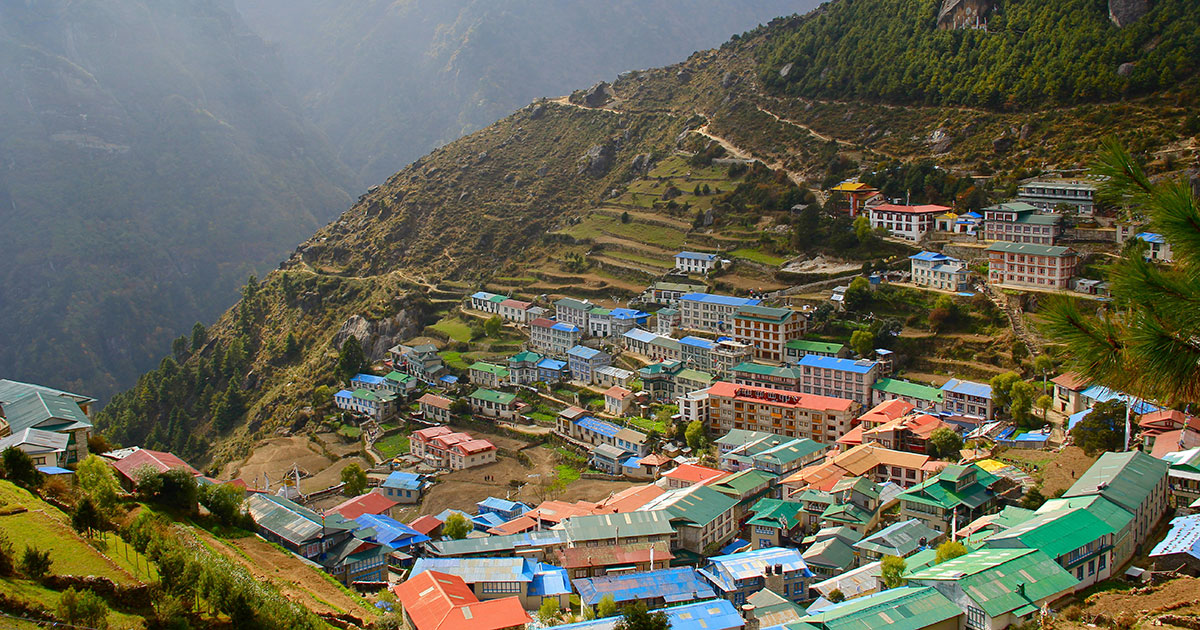
Some Highlights of the EBC Trek
- Duration: Typically, 12–14 days
- Difficulty Level: Moderate to Challenging
- Best Seasons: Spring (March- May) and Autumn (September–November)
- Starting Point: Lukla (2,860m), the Gateway to Everest.
- Final Destination: Everest Base Camp (5,364m) & Kala Patthar (5,545m)
Everest Base Camp Trek Distance
The total round-trip Everest Base Camp trek distance is approximately 130 km (80 miles) from Lukla to Everest Base Camp and back to Lukla. The trek follows an up-and-down pattern, which makes it challenging, though the distance is shorter.

It’s not possible to reach the Everest base camp without proper acclimatization, i.e. adjusting our body to the increasing altitude as there is a chance of getting altitude sickness. If you want to know more about Altitude sickness and AMS, read this blog.
| Trekking Section | Distance (km) | Estimated Time (hrs) |
| Lukla to Phakding | 8 km | 3–4 hours |
| Phakding to Namche | 10 km | 6–7 hours |
| Namche to Tengboche | 10 km | 5–6 hours |
| Tengboche to Dingboche | 11 km | 5–6 hours |
| Dingboche to Lobuche | 8 km | 5–6 hours |
| Lobuche to Gorak Shep | 4 km | 3–4 hours |
| Gorak Shep to EBC & back | 6 km | 4–5 hours |
| Gorak Shep to Kala Patthar & back | 4 km | 3–4 hours |
| Return to Lukla | 65 km | 3–4 days |
Everest Base Camp Height
The Everest Base Camp is at a height of 5,364 meters from sea level. Since the sight of Everest is not accessible from the Everest Base Camp, most trekkers ascend the Ultimate Everest Viewpoint of Kalapatthar (5,545m) to observe the breathtaking sunrise and sunset views of Mount Everest.

Key Elevation Points of EBC Trekking Trail:
| Landmark-EBC | Height (m) |
| Kathmandu | 1420 |
| Lukla | 2860 |
| Phakding | 2610 |
| Namche Bazaar | 3440 |
| Tengboche | 3860 |
| Dingboche | 4410 |
| Lobuche | 4910 |
| Gorakhshep | 5140 |
| Everest Base Camp | 5364 |
| Kala Patthar | 5545 |
| Pangboche | 3930 |
As you ascend, gaining altitude, the air becomes thinner. As a result, the oxygen levels drop significantly, increasing the risk of Acute Mountain Sickness (AMS). The only way to battle altitude sickness is a well-planned acclimatization, staying hydrated, and walking at a slow pace.
Everest Base Camp Trekking Route
The Everest Base Camp trekking route follows a well-established trail through the Khumbu Valley, with plenty of tea houses and resting points.
- Lukla to Phakding: Gentle descent through forests and the famous Hillary suspension bridge.
- Phakding to Namche Bazaar: A challenging climb to the buzzing town of Sherpa, with availability of teahouses and other facilities. Namche Bazaar is an acclimatization point for all trekkers and offers a stunning view of Everest.
- Namche to Tengboche: A spiritual journey to Tengboche Monastery, the largest monastery of the Khumbu Region. Tengboche is also famous for its panoramic view of the mountain range, including Ama Dablam, Lhotse, Pumori, and Everest.
- Tengboche to Dingboche: Dingboche enters into an alpine terrain with fewer trees and increased exposure. A very limited number of teahouses are found in this region.
- Dingboche to Lobuche: A rocky and barren landscape, full of glaciers and icefalls.
- Lobuche to Gorak Shep & Everest Base Camp: The final push rewards trekkers with an up-close view of Everest and the surrounding mountains.
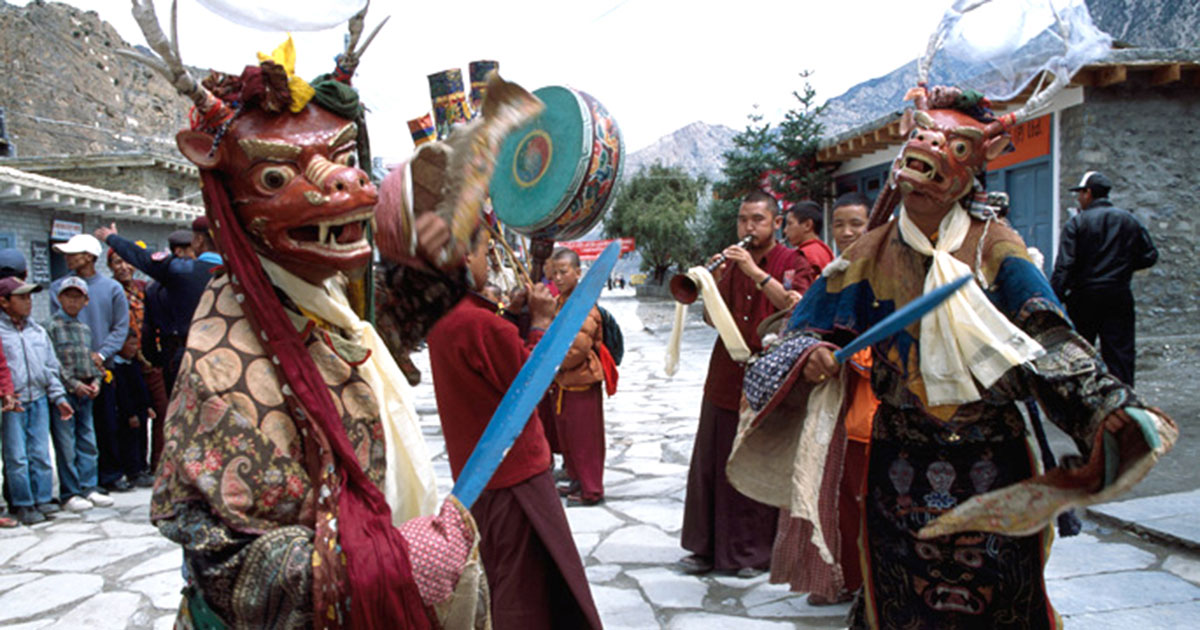
Distance vs. Duration: How Long Will the Trek Take?
A standard itinerary for the Everest Base Camp trek is around 12–14 days. About 8-9 days are for the ascent, including acclimatization days, and the remaining 3–4 days are to return to Kathmandu. Around 2 days are set aside for acclimatization through the Everest Base Camp trek.
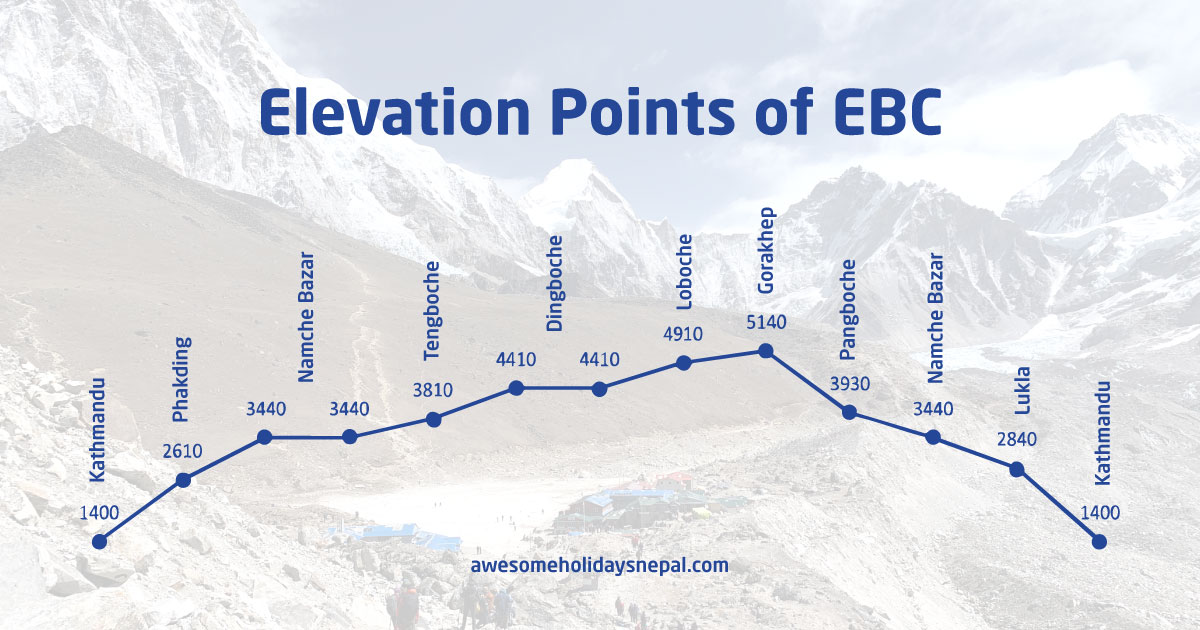
Physical Preparation for Everest Base Camp Trek
Trek to Everest Base camp is a moderately difficult trek that demands high physical fitness. To prepare for the Everest Base Camp trek distance, one must focus on increasing cardiovascular endurance by hiking, running, cycling, and doing similar activities. This also helps to strengthen the muscles of the legs, core, and back.
You must be aware of altitude sickness, its symptoms, preventive methods, and cures. Staying hydrated and eating carbohydrate-rich foods supplies more energy during the trek.
How to Book Your Everest Base Camp Trek?
For a safer and more adventurous trek to EBC, we are always at your service as a reliable trekking company. Awesome Holidays Nepal assists you in obtaining permits such as Sagarmatha National Park Entry and TIMS Card. Manage your gear and plan your budget (USD 1,200–2,500 per person), and let’s trek together to EBC.
Last Words: Why Everest Base Camp is a Trek of a Lifetime
The Everest Base Camp trek distance, combined with the Everest Base Camp height, makes this journey both challenging and rewarding.
Walking through the Everest Base Camp trekking route, you will witness some of the most breathtaking views on Earth, immerse yourself in the Sherpa culture, and push your limits. Proper preparation, physical training, and understanding the terrain will ensure a successful and unforgettable trek to the Roof of the World.
If you are an adventure lover, this trek should be on your bucket list. With careful planning and the right mindset, reaching Everest Base Camp will be a moment of pride and accomplishment!
FAQs
Expand AllWhich day of the Everest Base Camp Trek is the most difficult?
The trek from Dingboche to Lobuche is the most difficult trekking trail as this section involves a long, steep climb at higher elevations and makes the trekking more challenging with the thinning air.
What is the total length of EBC tekking trail?
The total length of the Everest Base Camp Trek is approximately 80 miles/130 km, depending on which route one may take.
Is altitude sickness common on the Everest base camp trek?
Yes, altitude sickness is a common problem in high mountains due to high altitude. However, this can be minimized with the practice of acclimatization and staying hydrated.
Can we take a helicopter to Everest Base Camp?
Yes, you can take a helicopter to Everest Base Camp at an altitude of 5,364 meters, providing you with an easier route to Base Camp without trekking at all.
Is the distance of the Everest Base Camp trek suitable for beginners?
The route of the EBC trek is more suitable for trekkers who have summited a few mountains. Though you do not have any prior experience, trekking to Annapurna Base Camp and Everest Base Camp can be a good start. Before trekking, prepare yourself mentally and physically and learn about altitude sickness.
What is the highest point in Everest Base Camp trek?
The highest point on the Everest Base Camp trek is Kalapatthar at 5,643 meters (18,514 feet), which is at a higher altitude than Base Camp itself.
What is the best time of year to trek to Everest Base Camp in terms of altitude considerations?
The best seasons are spring (March to May) and fall (September to November). These seasons have stable weather conditions and are, therefore, the most suitable times because acclimatization is easier with clear skies and moderate temperatures.
What is the weight limit for porters to carry?
It’s better to carry your personal fragile and sensitive items like camera yourself. Generally, Porters carry up to 30 kg. max (feeling not overloaded). One porter will be provided for every two trekkers.
Can I go for trekking in the Himalayas though I haven't done any trekking before?
It’s never too late for a new beginning. Though you do not have any prior experience, trekking to Annapurna Base Camp and Everest Base Camp can be a good start. Before trekking, prepare yourself mentally and physically and learn about altitude sickness.
Are there ATM facilities in Trekking routes of Nepal?
ATM facilities are available in some of the popular trekking routes and major cities in Nepal, like the Everest Region, Annapurna Circuit, Langtang, Kathmandu, Pokhara, Lukla, Namche Bazaar, and Dharapani. But they are not commonly found on remote or high-altitude trails like Upper Mustang, Manaslu, or Makalu.
Related blog posts
Discover a choice of tourist destinations loved by most of our visitors. Whether you're on a jungle safari to spot rare animals or walking through a world heritage site, these well-planned itineraries cover the major highlights of Nepal.


